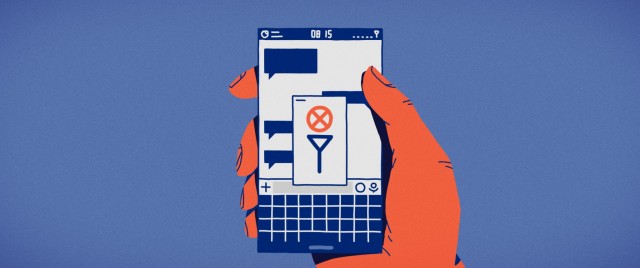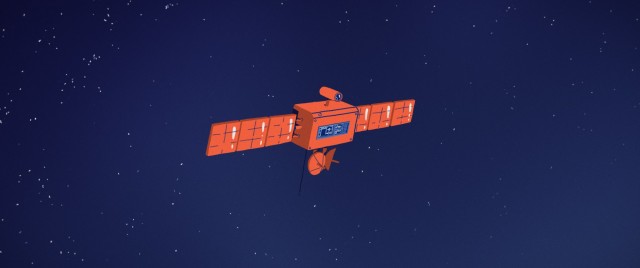Centred around themes of loneliness and isolation, subjects that have taken on extra significance over the past year or so, Benjamin Morard and Frederic Siegel’s The Lonely Orbit portrays a relatable, present-day situation, within an authentic futuristic world. Set in a “digital utopia”, this nine-minute animation tackles topical issues of how constant connectivity can lead us to feel disconnected with the real world with a fresh perspective and some stunning design work.
“This made me feel like a satellite”
The idea for The Lonely Orbit’s premise came to Siegel after he graduated from the Lucerne School of Art & Design and was struck with the reality of how “hard it is to keep friendships alive over a distance”. Moving their relationship into the digital realm, after years of spending every day together, the filmmaker explains how these changes led him to create the short’s celestial character.
“Somehow this made me feel like a satellite; being constantly connected in a virtual sense, but actually separated over a huge distance”, Siegel reveals. Adding that he felt like we was “floating in an orbit” around his friends”, who were still holding him close with what he describes as “their gravitational pull”.

“Our goal was, to show the ambivalence of Social Media and technology in general” – Siegel on the inspiration to create The Lonely Orbit.
“We live in a complex, global and digitalised society where our jobs and relationships determine our life choices and residency”, Siegel adds, as we discuss the motivations behind their short. “This can make people feel very lonely, but hyper-connected through digital media at the same time. So while we created a digital utopia, where you can connect to anyone in the world in the blink of an eye, everyone struggles with the balance of real and simulated connections and wishes himself/herself in a cozy bar from time to time”.
Setting out to portray “the ambivalence of Social Media and technology in general”, though these are subjects well-probed in short film, Morard and Siegel inject a fresh perspective with a subtle Sci-fi setting, striking aesthetic and the inclusion of its orbiting satellite character. The futuristic twists to the world of The Lonely Orbit are unobtrusive, keeping the story grounded instead of delving into the realms of fantasy. While the visuals also to help to keep this balance, it would be churlish to talk about the style with mentioning just how stunning the design is – the attention to detail in their world is really impressive.
However, it’s the aforementioned inclusion of the satellite, as a character, that truly won me over. Though our technician is front and centre of the story and he feels like the one we should really relate with (and we do), the directorial duo does a stellar job of assigning emotion to this communications tool.

The satellite’s importance in The Lonely Orbit’s narrative, and our engagement with it, shouldn’t be underestimated.
The eyes are often described as ‘the windows to the soul’ and Morard and Siegel tap into this by cleverly making the satellite’s camera feel as if it is allowing us a glimpse into its emotions. It’s reflective lens making it feel as if at times it is filling with tears as it gazes upon the world, listening to everyone else connect, while it drifts alone, desperate for contact of its own. We’ve felt an emotional connection to inanimate objects before, but by making us empathise with something designed to help others connect is an effective twist.
Having featured Siegel before on the site, in 2017 with his short Ruben Leaves, it’s exciting to welcome him back to S/W, along with Morard – their film is one I’ve wanted to feature since I saw it on the festival circuit back in 2019. Now in the preproduction stages of a new short film, about two police officers investigating weird occurrences, with the working title TV, we’re excited to see how that one turns out.

 Rob Munday
Rob Munday